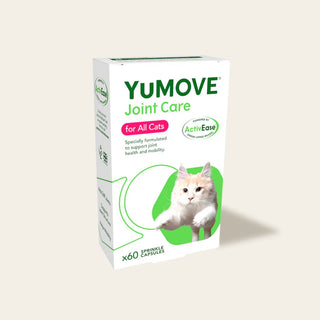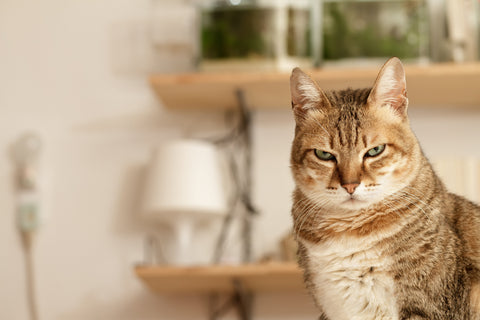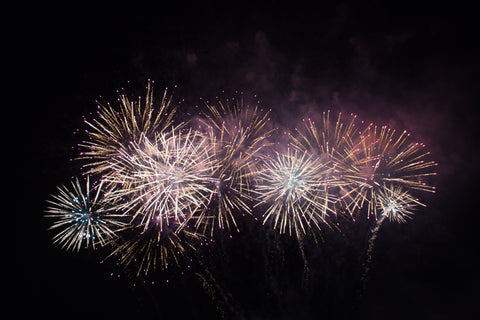

Why do cats walk in circles before lying down?
Cats are renowned for snoozing the day away. In fact, they’re so good at sleeping, they inspired the term ‘cat nap’. Most adult cats will sleep for 18 hours a day, while kittens will sleep for almost the entire day – an impressive 20 hours!
And you don’t have to be an eagle-eyed cat owner to notice that your sleepy cat walks around in circles before settling down. It’s also often followed by kneading (or making biscuits, as we like to call it!) But why do cats sleep so much and what are the theories behind this bizarre bedtime ritual? Let’s take a closer look…
Why is your cat so sleepy?

The reason your cat sleeps so much is quite simple. Wild cats need to preserve their energy for hunting, dodging predators, and general survival. And after a big meal, they’re likely to take a long snooze — a bit like the urge you may get to drift off after a large Sunday roast.
It might seem odd to think of your little ball of fluff as a hunter, but that’s exactly what they’re designed to be. And even though our precious kitties no longer need to hunt, the instinct is still very much there.
If you’re worried about how much time your cat spends sleeping, find out if your cat sleeps too much.
Why does your cat walk in circles before lying down?

- For survival
Cats in the wild are constantly on guard for predators. And according to animal experts, their sleeping positions correspond to the flow of the wind. This way, they can easily smell an approaching threat. Turning around helps them understand which way the breeze is blowing.
Your cat’s paw is full to the brim with sweat glands, which means it deposits its scent on whatever it touches. Circling also disrupts the grass or leaves on the floor. Both of these things signal to other animals that the spot is taken, deterring rival cats.
- To get comfy
In the wild, cats don’t have the luxury of plush beds, three-piece sofas or even cardboard boxes to rest in. They make their own ‘beds’ in grass, dirt or leaves. And this circular movement helps to flatten tall grass, root out rocks and spot anything prickly.
Domesticated cats are just as fussy. Even the pampered ones! You could set up the perfect resting place and they’ll still rearrange it to their satisfaction. To a modern cat, this habit isn’t worth breaking.
- To keep warm or to cool down
You may have noticed that your sleeping feline will often tuck themselves into a ball, with their tail wrapped around their body. This helps to keep them warm. By turning in a tight circle, your cat can make the perfect nest to ball up in and stay toasty.
On the other hand, your cat could also be trying to stay cool. Feral cats will turn around to lift up the debris on the ground, uncovering the cool earth beneath. In your home, your cat may replicate this to find the cooler parts of the blanket – a bit like when you flip a pillow to enjoy the cooler side!
- As a pest deterrent
In the great outdoors, a cat’s bed is potentially home to unwanted bedfellows. Think small snakes or insects. Before curling up, your cat’s natural instincts tell them to perform this circling ritual to scare away any unwelcome guests.
Is cat circling the sign of a bigger problem?
Turning in a circle before lying down is normal cat behaviour. However, excessive circling can indicate something else. Here are a few reasons for too much twirling:
Joint stiffness
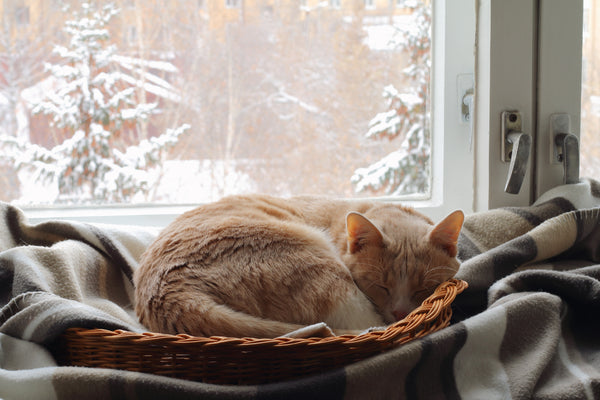
Does your cat stoop and rise many times during their circling ritual? Maybe they immediately get back up after getting comfy? In the worst cases, they might not lie down at all after circling. These are all signs that your cat could be experiencing joint issues.
This type of circling is driven by your cat being unable to get comfy. Cats will often avoid lying down entirely as they associate it with being uncomfortable.
According to cat behaviourist, Lucy Hoile, sleeping curled up in a ball could be a warning sign of joint stiffness.
“It’s quite normal for cats to sleep curled up in a little ball, but if that’s the only way they ever sleep, that might indicate that they’re sort of ‘uncomfortably resting’,” says Lucy. “Whereas with your happy, relaxed, and comfortable cats, you’ll often see them stretching, splayed out on the windowsill and so on.”
If this sounds like your feline, why not try YuMOVE Joint Care for Cats? Our cat joint supplement uses high-quality ingredients to help aid stiff joints, help mobility and support joint structure.
Or, if you think your cat needs a little extra support, give YuMOVE Joint Care PLUS for Cats a go – it’s our new high-strength cat joint supplement designed for older and stiffer cats. Don't forget to speak to your vet if you’ve noticed any of the signs above.

Boredom
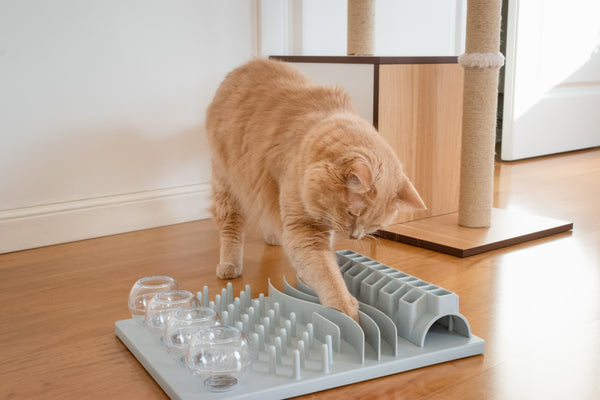
Obsessive circling can sometimes be accidentally encouraged by pet owners. An under-stimulated cat is likely to become bored. This will compel them to take part in many bizarre behaviours – circling being just one of them!
At YuMOVE, we recommend playing with your cat and providing them with enough enrichment – such as toys, puzzle feeders and scratching posts – to stop them getting bored. If you’re unsure how much you should be playing with your cat, why not check out our guide on how much exercise your cat needs?
Stress
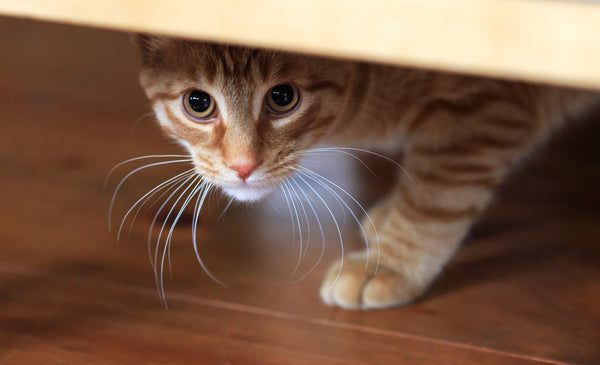
Stress can also trigger a change in cat behaviour. It can be caused by many different things – such as illnesses, moving house, a new pet or just new situations in general. If your cat is feeling nervous or stressed out about something, they may express this angst with pacing or circling.
Unsure if your cat is stressed or not? Read our article on spotting the signs of stress in cats. Or if you’re looking for something to help calm your cat, YuMOVE Calming Care for Cats is a great choice. It’s packed with scientifically backed ingredients that are proven to help reduce stress and ease anxiety.
In summary
Circling is completely normal behaviour driven by your cat’s natural instincts. It helps them get comfier, adjust their temperature and mark their territory. But if you’re concerned with how much your cat circles – or think they may be experiencing joint stiffness – don’t take any chances and pay a visit to your vet.
Keen to give YuMOVE Joint Care for Cats or YuMOVE Joint Care PLUS for Cats a try? Save 50% for the first two months when you subscribe using SAVENOW** at checkout.
